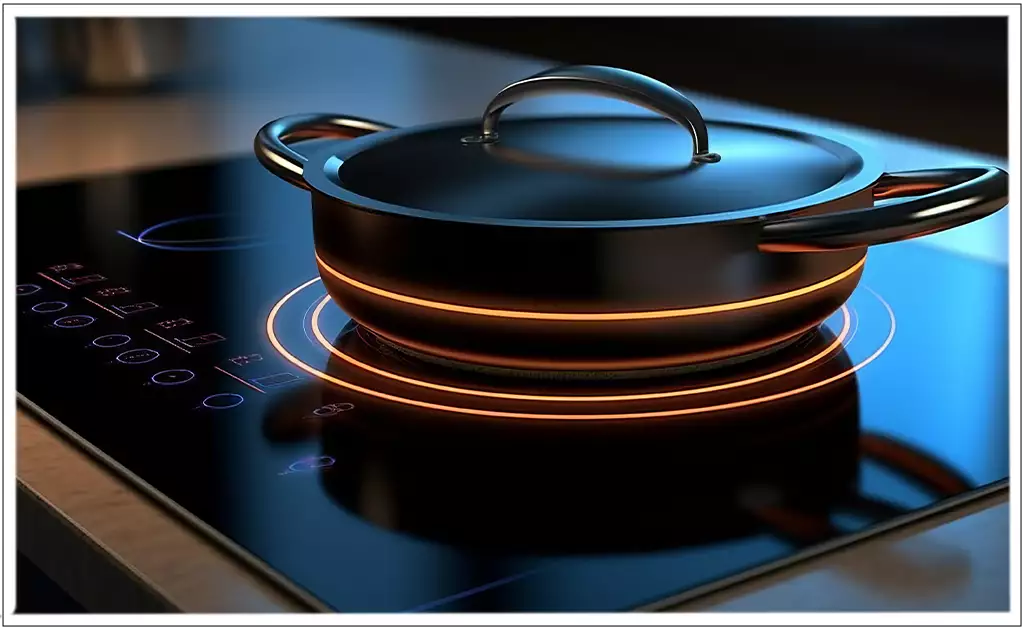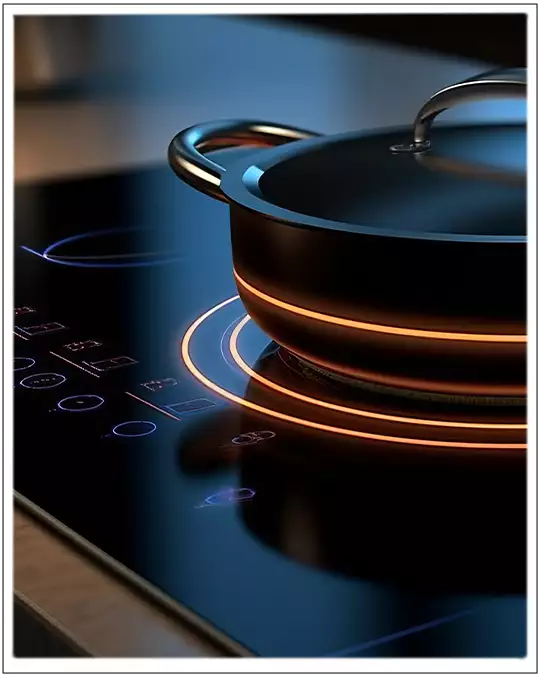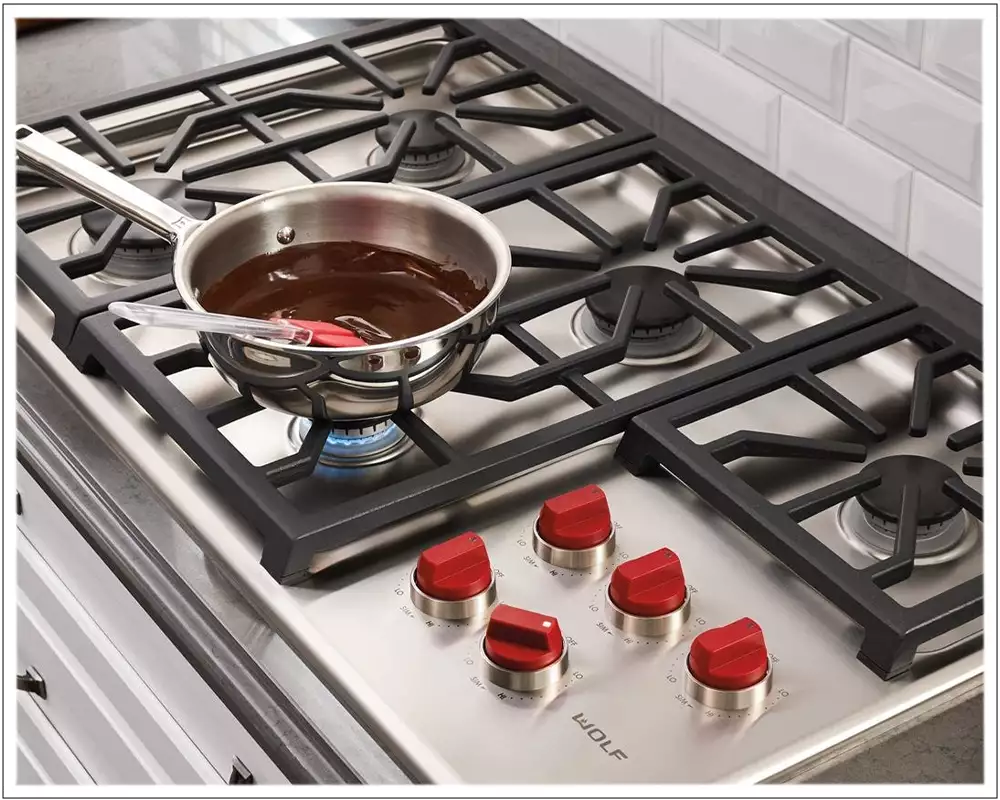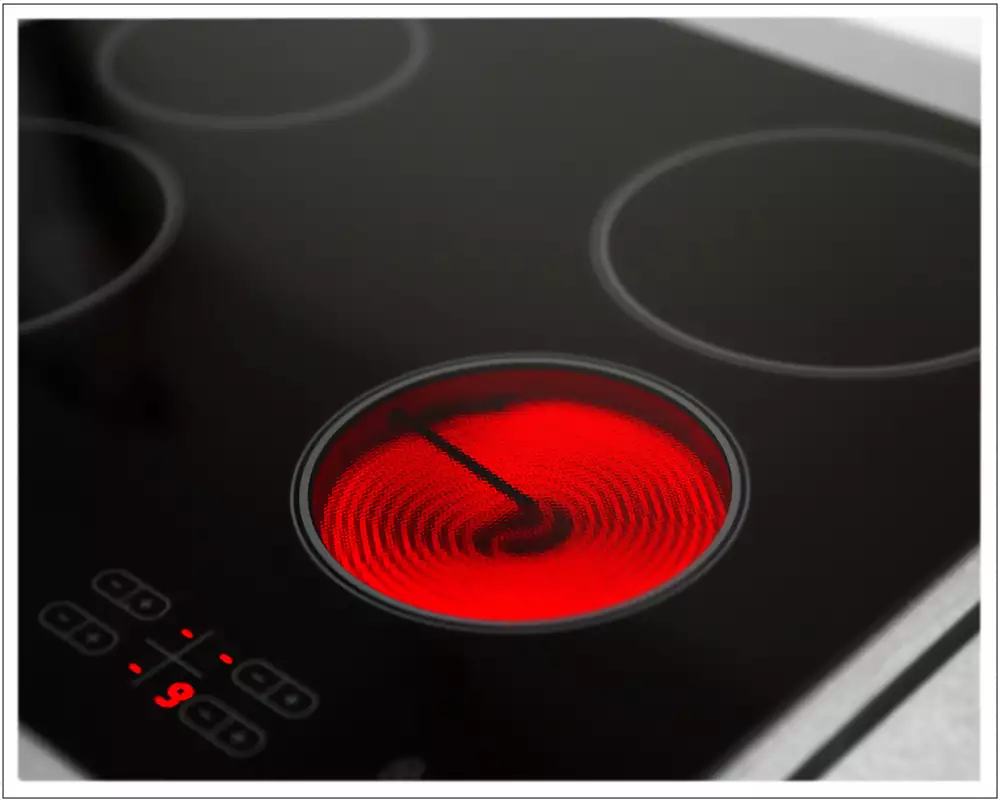

Induction
Induction Cooktops can be Placed/Installed directly on the Countertop Granite, Quartz or Composite. Induction Cooktops are also Available with a Free Standing Range. Hook ups Require a 30 to 40 Amp Dedicated 240 Volt Service.
Pro's
- Very Reliable
- Very Sleek Looking Sits Directly on Your Countertop
- Common Color is Dark Gray or Black
- Can have up 5 Burners with 1 Variable Size Burner
- Heats the Pan your Cooking with not the cooking Surface
- Cooking Surface remains Cool to the Touch During and After Use
- Even Heat Distribution for Fast Heat Up
- Heat Transferred is 85% to 90% the Highest of the 3 Cooktops
- Responds quickly to Temperature Setting Changes
- Glide Touch Controls in the Glass
- Water Boils in 1/2 the Time as Gas
Con's
- Higher Price Tag
- Some complain about the Buzz (at High Temp Settings)
- Could affect a Pacemaker (2 foot Distance)
- No Glass Aluminum or Copper Pans (Ferromagnetic or Magnetic Metal Pans)
- Can Scratch, Crack or Break from abuse
- Life in Hours about 10,000 for Home use
Gas, Natural or Propane
Gas Cooktops can also be Installed directly on the Countertop Granite, Quartz or Composite. Gas Cooktops are Available in a Wide Range of Styles and Colors. Hook ups Require a Dedicated Gas Line. Image is a Sub-Zero CG365 P.S

Pro's
- Preferred by Professional Chefs
- Provide more Precise control of the Heat, Faster Raising or Lowering of Temperatures
- More Mechanical and less sensitive to Breaking
- Provide Direct Heat for Efficiency and is considered Ecologically Friendly
- Surprising Variety of Controls, Knobs and their Convenient Placement
- Sizes can Range from 15" to 48", Most common are 30" & 36"
- Number of Burners can be up to 6 With a Grill or Griddle
- Burner BTU ranges from Low of 500 - 5000, Medium around 90,000 and High 15 to 18,000 *
Con's
- Cleanup from Spills, Boil Over's, Splattering more Difficult
- Only about 40% of Flame Heat goes to the Food
- Possible Methane Gas and other Pollutants (see Arguments below)
Electric Radiant
As with the Induction & Gas, Radiant Cooktops can also be Installed directly on the Countertop Granite, Quartz or Composite. Radiant Cooktops Have a Heating Coil Beneath the Top's Surface, when Activated the Coils Glow and Radiate Heat to the Pans. 73% - 75% of Energy Is Transferred to the Food being Heated. Using a Flat Bottom Pan is more Efficient, More of the Pan Surface is in Direct Contact with the Heat. Requires a 30 or 40 Amp Dedicated 240 Volt Service.

Pro's
- Sleek Looking in Stainless and Color
- Can have up 5 Burners with 1 Variable Size Burner
- Available in 30" and 36" Sizes, Black and Stainless Steel is Common
- Can be the Least Expensive to Purchase
- Easy Installation, Drop in the Cut Out in the Countertop Material
- Even Heat Transfer to the Pan
- Glass or Ceramic Surface for Easy to Clean up
- Convenient Controls can be Knobs or Touch Controls in the Glass
Con's
- Surface of Radiant Cooktops get Hot while Cooking and stays Hot
- Heating the Food takes a little longer, and Heat Distribution can be uneven
- Glass Surface will Scratch or get Permanent Markings if it gets too Hot
- Requires a Special Cleaning Paste
There has been much Talk about Gas Cooking Appliances. The State of New York is proposing a Ban on Gas Cooking Appliances in New Installations. Our Research Team is Preparing a Separate Article on that Subject.
Comment Below
Internal Links
Like this Article, you can give us a Thumbs just click on the Icon. It's anonymous and we will Thank You.

“Of the Various Branches of Electrical Investigation, perhaps the most interesting and immediately the Most Promising is that dealing with Alternating Currents” by Nikola Tesla July 10, 1856 - January 7, 1943 Worked on the Development of AC Current we use on our Electrical Grid Today
© Copyright 2023 YPRemodel.com. All rights Reserved. This material may not be Published, Broadcast, Rewritten or Redistributed without written Permission.
